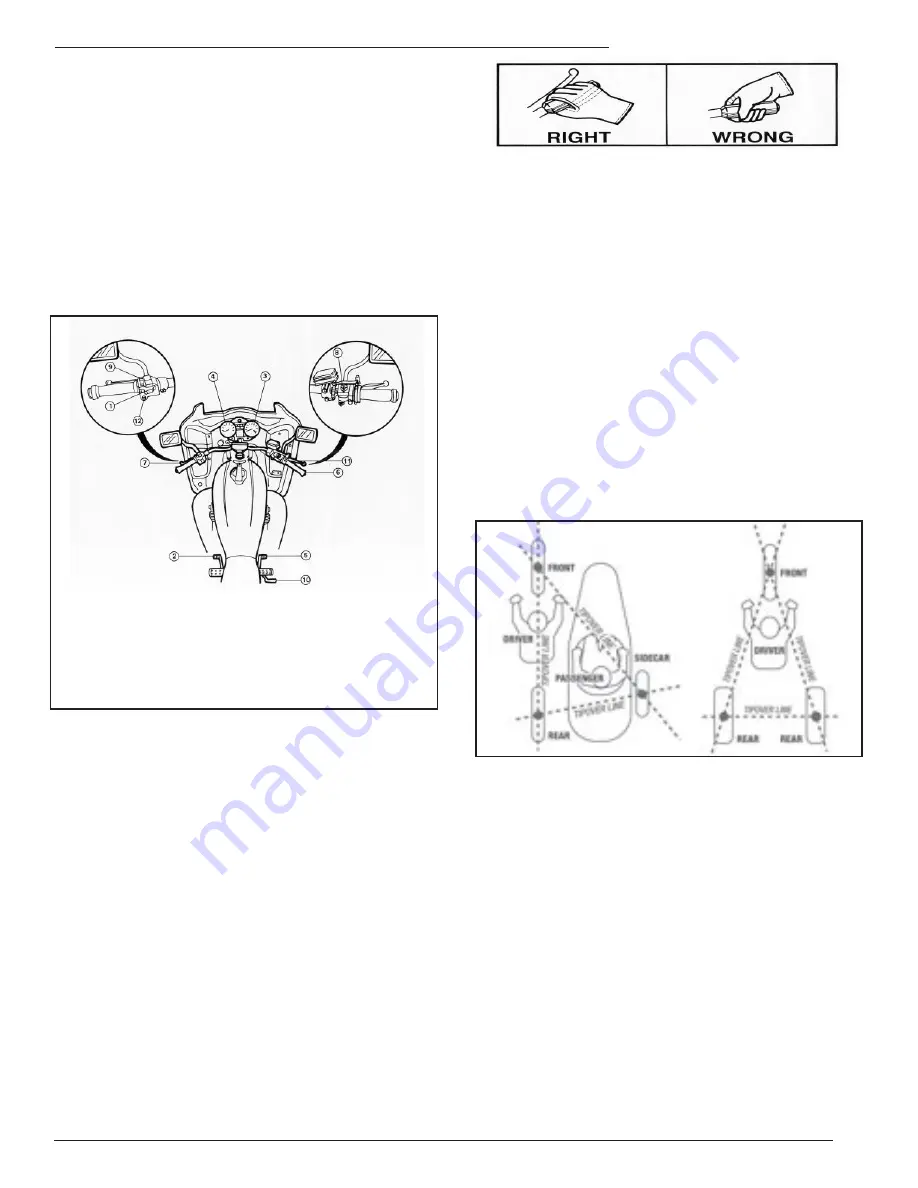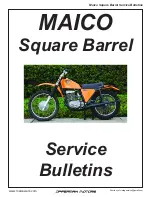
5
Colorado Motorcycle Operator’s Handbook
0DNHDOOWKHFKHFNV\RXZRXOGRQ\RXURZQF\FOH
)LQGRXWZKHUHHYHU\WKLQJLVSDUWLFXODUO\WKHWXUQ
signals, horn, headlight switch, fuel control valve and
HQJLQHFXWRIIVZLWFK0DNHVXUH\RXFDQÀQGDQGRSHU
-
ate them without having to look for them.
.QRZWKHJHDUSDWWHUQ:RUNWKHWKURWWOHFOXWFKDQG
brakes a few times before you start riding. All controls
react a little differently.
5LGHPRUHFDXWLRXVO\XQWLO\RXEHFRPHPRUHIDPLOLDU
with the motorcycle.
3. CONTROL FOR SAFETY
This manual cannot teach you how to control direction,
speed or balance. That’s something you can learn only
through practice. Control begins with knowing your
abilities and riding within them and the rules of the road.
3.1 BODY POSITION AND POSTURE
: Sit far enough
forward with your arms slightly bent when you hold
the handle grips so that you can use your arms to steer
the motorcycle rather than hold yourself up. Bending
your arms lets you turn the handlebars without having
to stretch.
+$1'6+ROGWKHKDQGOHJULSVÀUPO\.HHS\RXUJULS
over rough surfaces. Start with your right wrist down.
This will help you keep from accidentally using too much
throttle - especially if you need to reach for the brake
suddenly. Also, adjust the handlebars so your hands are
even with, or below your elbows. This allows you to use
the proper muscles for precision steering.
KNEES: Keep your knees against the gas tank. This will
help you keep your balance as the motorcycle turns. This
is not necessary on a 3-wheel motorcycle.
)((7.HHS\RXUIHHWÀUPO\RQWKHIRRWSHJVWRPDLQ
-
tain balance. Don’t drag your feet. If your foot catches
on something, you could lose control of the motorcycle.
Keep your feet near the controls so you can get to the
controls quickly if needed. Also, don’t let your toes point
downward - they may get caught between the road and
foot peg.
BASIC 3-WHEEL VEHICLE CONTROL: Tipover lines.
It is possible when operating a 3-wheeler to have only
two wheels contacting the ground. This condition exists
whenever enough weight is transferred outside what are
NQRZQDV´WLSRYHUOLQHVµ7KHÀJXUHEHORZLOOXVWUDWHVWKH
tipover line on trikes and sidecar-equipped motorcycles.
3.2 TURNING
: Riders often try to take curves or turns too
fast. When they can’t hold the turn, they end up crossing into
DQRWKHUODQHRIWUDIÀFRUJRLQJRIIWKHURDGRUWKH\RYHUUHDFW
and brake too hard causing a skid and loss of control. Until
you learn to judge how fast you can safely take a curve, ap-
proach all turns with caution. Use the following four steps
for better control: SLOW, LOOK, LEAN, ROLL.
SLOW: Reduce speed before the turn by closing the
throttle and, if necessary, applying both brakes.
LOOK: Look through the turn to where you want to go.
Turn just your head, not your shoulders and keep your
eyes level with the horizon.
LEAN: To turn, the motorcycle must lean. To lean the
motorcycle, push on the handgrip in the direction of the
turn. Press left, lean left, go left. Press right, lean right,
go right.
1. Turn-Signal Switch
2. Gear-Change Lever
3. Tachometer
4. Speedometer
5. Rear Brake Pedal
6. Throttle
7. Clutch Lever
8. Engine Cut-Off Switch
9. Light Switch
10. Kick Starter
11. Front Brake Lever
12. Horn Button







































